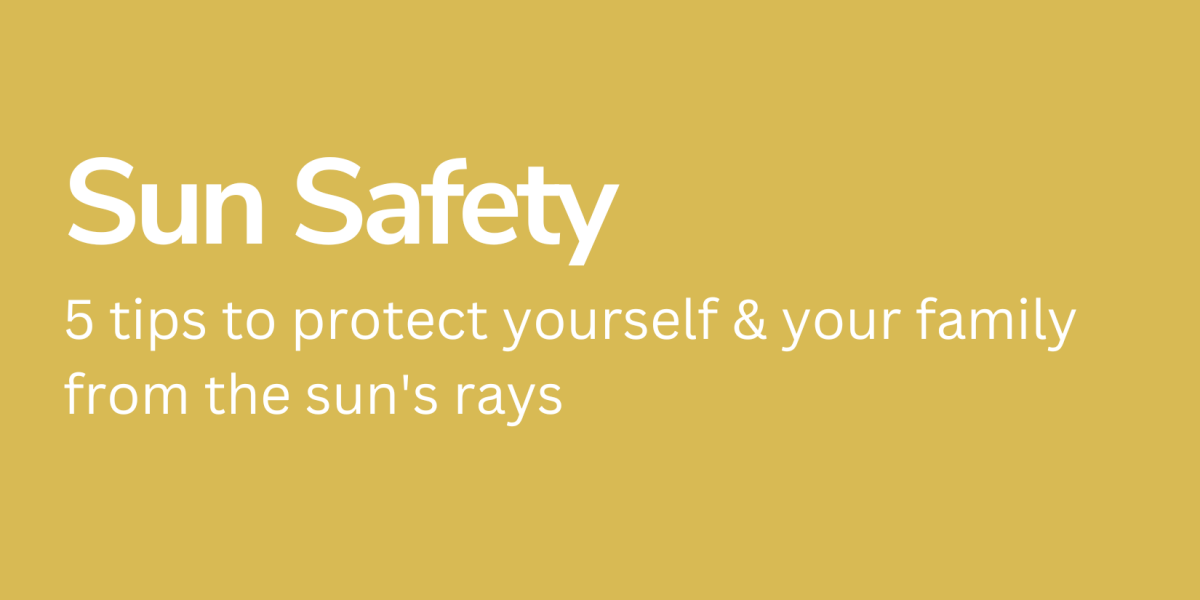It can be easy to believe that the sun’s rays only affect us during the summer months. Don’t be fooled! The sun’s rays reach us all year round and can still affect us on the coldest days of winter. In this article, you will learn about why the sun’s rays can be harmful and the ways in which you can protect yourself and your family all year round.
Understanding Sun Damage
Why do we need to protect ourselves from sun damage? What makes the sun so harmful? Two words: Ultraviolet radiation (also known as UV radiation).
The sun releases three types of UV radiation: UVA, UVB, and UVC rays. UVC rays are soaked up by Earth’s ozone layer – never reaching the surface and never reaching us. UVA and UVB rays are the types that carry harm. UVB rays are responsible for producing sunburn – potentially leading to skin cancer. UVA rays also have a role in skin cancer formation. Additionally, UVA rays cause premature skin aging. Both UVA and UVB rays can cause eye damage.
To avoid the harms that UV rays may pose, consider using the sun-safety tips listed below!
Sun-Safety Tip #1: Slather on the Sunscreen
Apply sunscreen 15 to 30 minutes before going outside. Use a generous amount on all parts of the body that may be exposed to sunlight. Reapply every two hours or immediately after sweating or swimming.
When picking out a sunscreen, keep the following recommendations in mind: a good sunscreen should provide UVA and UVB protection (broad spectrum), an SPF of at least 30, and a water-proof/water-resistant formula. Before heading out, make sure your sunscreen is not expired!
Sun-Safety Tip #2: Cover Up
Wear clothing that will protect you from the sun. Clothing that is light in colour with long sleeves/pant legs is great for adding an extra barrier between your skin and the sun. On warmer days, opt for something lightweight to avoid overheating.
Don’t forget your head. Wearing a hat with a brim is the best option for sun protection – the wider the brim the better. Baseball caps are another option but be sure to use sunscreen as well since these types of hats do not protect the neck or ears.
Sun-Safety Tip #3: Throw on Some Shades
The ideal pair of sunglasses offer a close-fitting frame to keep stray UV waves away, as well as UVA and UVB protection.
Sun-Safety Tip #4: Watch the Clock
UV rays hit the Earth at the highest (and most harmful) levels between 10am and 4pm. During this time, do your best to stay indoors or out of the sun. If you are in the sun, ensure you follow other sun safety measures.
Sun-Safety Tip #5: Take Cover in the Shade
The shade provides a good barrier from the sun and it also keeps you cool. Before you go outside into the sun, try your best to plan for shade in advance. For example, if you are going to a park, figure out where the large shady trees are, if you are going to the beach, bring your own shade with a beach umbrella.
The extent to which you follow these guidelines can be based on the UV index. Developed by Environment Canada, the UV index informs Canadians about the strength of the sun’s ultraviolet radiation. The higher the number, the stronger the UV rays, the greater the need to protect yourself. The Thunder Bay District Health Unit posts the daily UV index in our area on their website. For more information, and to learn more about how the UV index affects which sun-safety precautions you should take, visit: https://www.tbdhu.com/UV.
Following these sun-safety tips means enjoying the sunshine while protecting your health today and in the future. For additional information on the harms of sun exposure and to learn more about sun-safety, take a look at the Government of Canada website.
Frances Nabigon, 3rd year Nursing student



